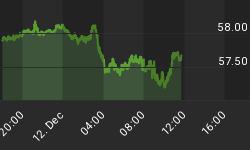Before we begin, a quick note that this week's article is largely a continuation of musings from last week, entitled Ingredients for Inflation. In that article - which was widely circulated around the internet - we wrote about the coming wave of inflation that will result when the velocity of money accelerates in the US and all the new money printed by the Federal Reserve begins to circulate.
As many are aware, and as we discussed last week, the Federal Reserve has greatly expanded its monetary base over the past several years - mostly in an effort to shore up this nation's banking sector in response to the financial crisis sparked in 2008.
However, despite the rampant printing of growth - which usually leads to inflation - the impact has been relatively small to date because all this new money has failed to permeate our economy. New dollars haven't been used to buy houses or TVs or gasoline; but has instead been sitting in the Fed's digital vault, supporting banks' weakened balance sheets.
In other words, velocity - or a lack thereof - has kept inflation from running rampant. To borrow a phrase from one of last week's readers: "If it doesn't circulate, it can't inflate."
Looking at data from the St. Louis Federal Reserve we can see that in the last quarter of 2011, the velocity of M2 money (the broadest measure of money supply still measured by the Fed) fell to the lowest level on record. The fact that money supply continued to expand was, therefore, irrelevant in inflationary terms.
However, looking again at those same two charts (M2 Velocity and M2 Money Supply) will give us a great idea of what is headed our way.
Rather than looking at more recent data, look back to the 1970s, a period to which we've drawn endless similarities in both economic and political terms. This was a time of rampant inflation - inflation that was recognized because money supply was expanding at the same time that velocity was on the rise.
Given velocities precipitous fall to all-time lows, it's clear that the same thing is about to happen now. After seeing money supply expand over the past several years, we are finally on the verge of seeing a reversal of velocity; and what that happens, get ready for inflation like this country hasn't seen in over 30 years.
Obviously this development will have far-reaching implications for investors; they aren't to be ignored or written-off. While we've written before that we don't give readers many specifics about what's coming in the markets - after all, clients pay us for that knowledge - we wanted to make this week's article a little clearer.
After all, investors stand to make or lose fortunes based on these developments. Obviously, while we prefer to have clients paying us to make them fortunes, we hardly want to see unsuspecting market participants lose fortunes either.
So, in an effort to make this week's article a little more actionable for investors, suffice it to say that given the economic circumstances we see coming, hard assets are an absolute must for every investor.
Let's be clear, we are not in any way shape or form encouraging investors to pick up the phone the next time they see a Goldline commercial and place an order. Nor are we suggesting that investors clear space in the garage for barrels of light sweet crude.
What we are saying is that - because of what we see coming - it is imperative that investors allocate more capital than normal to those investments that will maintain or increase their value an in inflationary environment. Note: This also isn't to say that investors need to sell all their denominated assets and buy investments priced in Yen, since inflation isn't necessarily synonymous with a weak dollar.
As always, changing economic conditions require changing investments. Readers with questions are free to call our office.
















